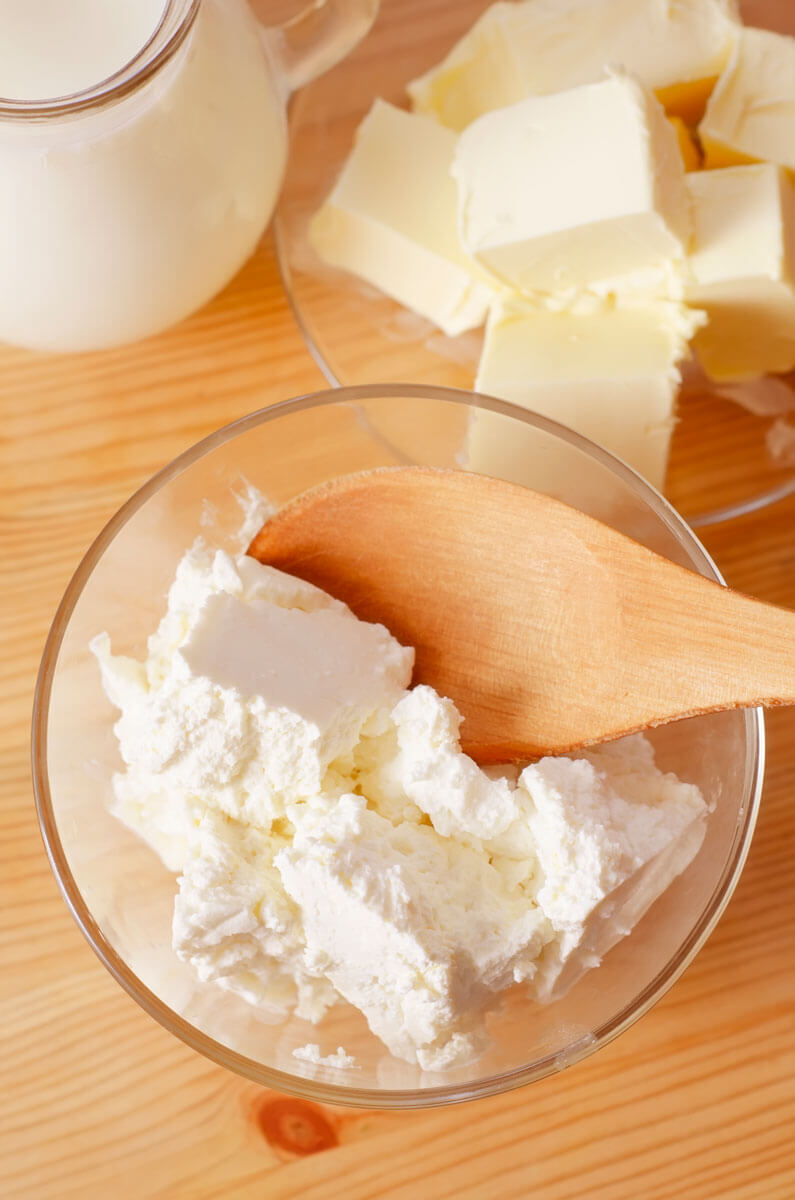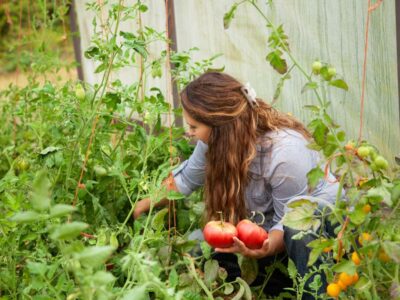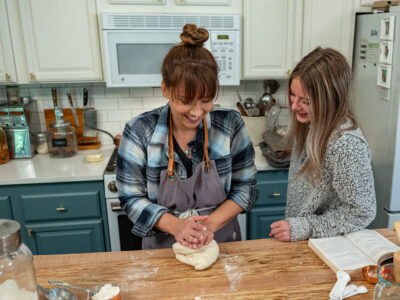We’re talking all about fermented and cultured dairy! Everything from the health benefits, the history and why you should absolutely be consuming fermented dairy on a regular basis. Not just fermented dairy, but HOMEMADE fermented dairy and why it’s so much better for you!

Learning how to make cultured and fermented dairy products such as homemade yogurt and homemade cultured buttermilk is a beautiful thing to do for your health. Additionally it increases the shelf-life of your dairy products regardless if made from store bought milk or fresh milk from your dairy cow. It’s also more frugal than purchasing these products at the grocery store or specialty food market, and it’s really fun!
This is exactly what we’re discussing in today’s Pioneering Today Podcast, episode #295.
Not only is making fermented dairy products increasing your homesteading self-sufficiency skills, but I also love that making these products is a great stepping stone to getting into homemade cheese making (which is a brand new course in the Pioneering Today Academy!).
One of the reasons I love having fermented or cultured dairy products on hand is because for years it was a long-standing goal of mine to learn about cheesemaking. Little did I know, you can actually use these cultured and fermented dairy products as starter cultures for your homemade cheeses.
This means you don’t need to buy dehydrated or freeze-dried cultures in order to make cheese, you can use your fermented dairy products over and over again!
This isn’t to say these dehydrated or freeze-dried cultures are bad, they’re actually great to have on hand to either start your first batch of a ferment, or to keep on hand as a backup (but I’ve got a more frugal tip on this below!).
When you’re starting your first batch of fermented or cultured dairy, however, you’ll either need to purchase a culture or get one from a close friend.
Table of Contents[Hide][Show]
- Cultured vs. Fermented
- Types of Cultured and Fermented Dairy
- Health Benefits of Fermented Dairy Products
- Lactose in Fermented Dairy
- History of Fermented Dairy
- Store-Bought vs. Homemade Fermented Dairy
- How are Foods Fermented?
- Direct Set vs. Heirloom Cultures
- How to Save Cultures
- Mesophillic vs. Thermophillic
- Resources
- More Articles You May Enjoy
Cultured vs. Fermented
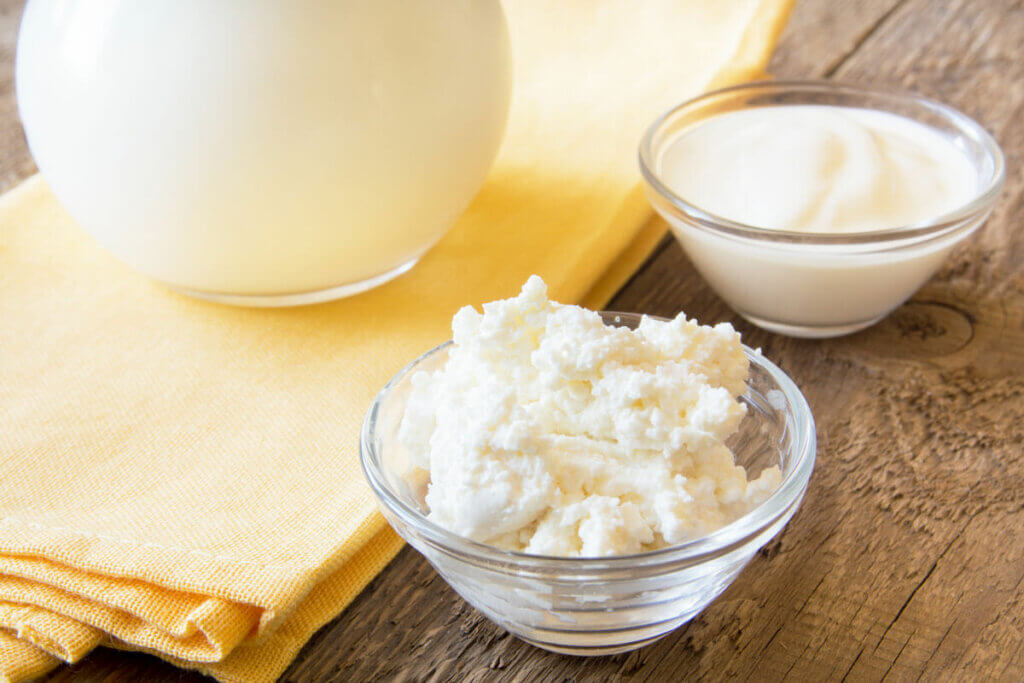
You may be wondering if cultured dairy and fermented dairy products are the same or different. The answer is “the same AND different”. Very helpful, right?
In actuality, all fermented foods are cultured, but not all cultured foods are fermented.
Yogurt, for example, is a cultured and fermented food. Live cultures are added to milk and then allowed to ferment. Whereas certain cheeses are cultured but not fermented.
Types of Cultured and Fermented Dairy
There are many different types of fermented and cultured dairy products. Most of us are familiar with yogurt and maybe even milk kefir, but this really just scratches the surface. Here are some other products that can be fermented an/or cultured:
- yogurt
- dairy kefir
- sour cream
- buttermilk
- soft cheeses
- hard cheeses
This list doesn’t even go into the fact that within the yogurt family alone, there are even more varieties such as Greek yogurt, Bulgarian yogurt, even vegan yogurt that can be made from coconut or other nut milk.
Health Benefits of Fermented Dairy Products
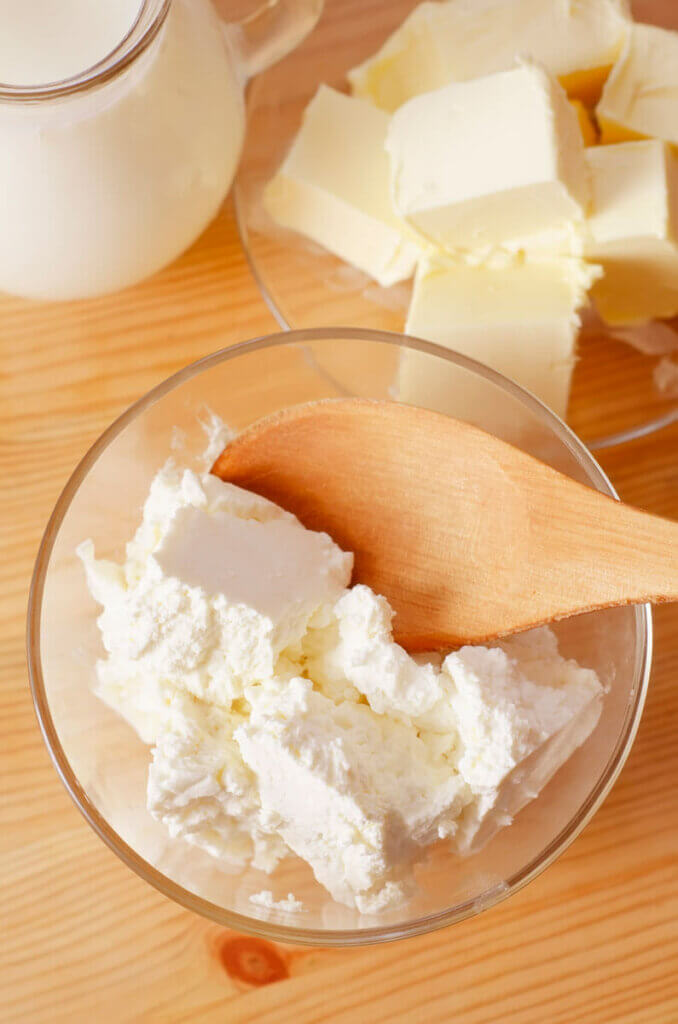
There have been quite a few tests done on the health benefits of fermented dairy, but one, in particular, showed that “fermented dairy foods have been associated with obesity prevention and reduction of the risk of metabolic disorders and immune-related pathologies.” (Source)
Cultured dairy products contain probiotics and we all know that the more probiotics we consume, the healthier our gut is. A healthy gut will consist of a large diversity of flora and fauna which equates to better digestion, a healthier immune system, and so on.
It’s important to note that I am not a certified medical practitioner. This post is not intended to diagnose or treat but is for informational purposes only. Please contact your healthcare professional before introducing new herbal and natural remedies into your wellness routine.
Lactose in Fermented Dairy
Kefir and yogurt are two fermented dairy products that are lower in lactose. Because there are so many today that seem to suffer from lactose-intolerance, these may be two fermented dairy products they can enjoy.
This is only for those with lactose-sensitivities, not true allergies. But, much the same way those with gluten sensitivities can consume true sourdough bread, those with lactose-intolerance can oftentimes enjoy fermented dairy products.
The reason for this is that when you ferment these dairy products, the lactic acid within these products breaks down the lactose, reducing the overall amount of lactose to be digested by the body, which then allows people who are sensitive to lactose the ability to eat it.
History of Fermented Dairy
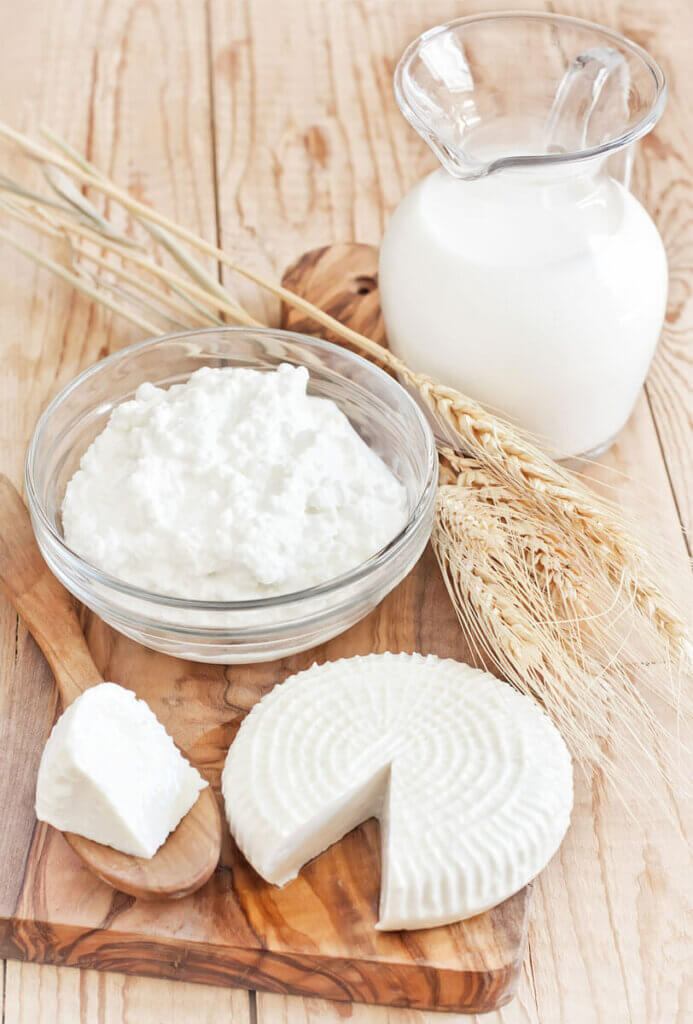
When we look at history, we can learn a lot about how people learned to ferment just based on living life. For example, shepherds or travelers who would be out for days at a time would take milk from either a goat, camel, sheep, etc., and put that milk into a leather bag to drink on their travels.
After a day or two, that milk was no longer fresh and when they went to drink it they would notice that the milk was much thicker and tangier than the fresh milk from days prior. Hence, it had fermented!
This will happen naturally with raw milk, however pasteurized milk needs to be inoculated with a previous culture or it will just turn bad.
In the 1940s and 1950s, traditionally fermented foods began to fall to the wayside as more pasteurization, packaged products, and refrigeration were invented.
Using fermentation was how people preserved their dairy products before refrigeration. In a previous podcast that I did with my dad, he shared some great self-sufficiency tips that they used as he was raised through the Great Depression, including the fermented dairy products his mom used to make.
Store-Bought vs. Homemade Fermented Dairy
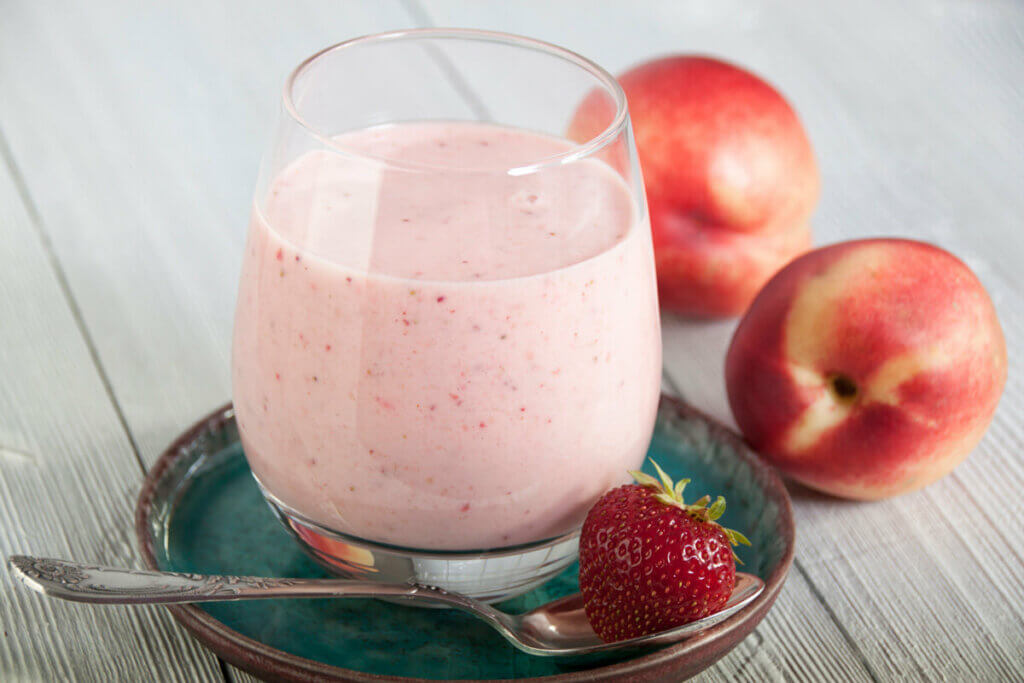
In the past decade, it’s been wonderful to see that more fermented foods are becoming mainstream again. Things like kombucha and milk kefir can actually be found on regular grocery store shelves now instead of having to seek out specialty stores for these items.
However, these mainstream products tend to have a lot more sugar than the homemade equivalent. Take yogurt, for example, a typical container of fruit-flavored yogurt has a lot more sugar in it than the homemade yogurt I make at home. Even when I stir in some honey and fresh or frozen fruit, the sugar content is still significantly different.
The same goes for the milk kefir and even some of the kombucha or water kefir you find at the grocery store.
How are Foods Fermented?

Depending on the food being fermented, you will feed it a “food source”. If it’s milk kefir, that food source is milk. If it’s a sourdough starter, that food source is flour, etc.
The food then sits out at room temperature for about 8-24 hours while it ferments.
And that’s it! Fermentation is one of the easiest preservation methods there is! You literally just feed it then set it and forget it.
Direct Set vs. Heirloom Cultures
When buying a culture for your first ferment, you’ll want to be sure to know the different between a direct set culture versus an heirloom culture.
Direct set cultures are one-time use only. They will not produce a product that can culture future batches. Whereas an heirloom culture will continue to culture future batches as long as it’s properly fed and cared for on a consistent basis.
If you want to get into cheese making, or if you always want to have homemade buttermilk on hand, etc., you’re definitely going to want to start with an heirloom culture. This will allow you to reuse the culture indefinitely.
For example, in my homemade cultured buttermilk recipe, you’ll see I use a culture that’s an heirloom culture. This then allows me to use that buttermilk again and again for future batches. I simply keep a little bit of buttermilk back each time to start my next batch.
As long as I care for my culture, I will never have to buy buttermilk again.
How to Save Cultures
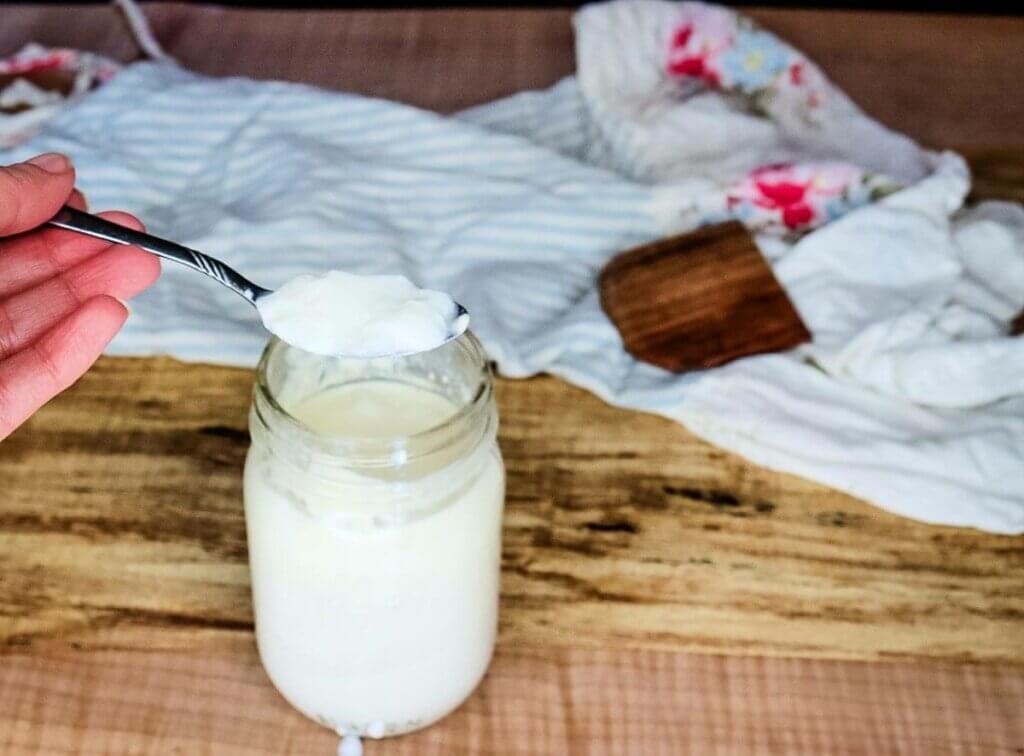
While you’re making a ferment, as long as you’ve used an heirloom culture, after about 8-24 hours, your ferment is at its peak strength. It’s at this time that I will take a few tablespoons of the cultured food and freeze it to save for the next time I need a culture.
Saving some of your cultures in the freezer is also a great “backup” in case your culture or ferment accidentally gets used up without reserving some to start your next culture.
Alternatively, you can just reserve some of your cultures in the refrigerator to use in your next batch. I will mention, that if you just save it in the refrigerator and don’t use it within a week or two, the culture will continue to get tangier and tangier which can affect the flavor of your future batches.
This is why I recommend freezing a small portion at the peak of fermentation (between 8-24 hours).
Mesophillic vs. Thermophillic
- A mesophilic culture will ferment or culture at room temperature without the addition of heat.
- A thermophilic culture needs to maintain a consistently higher temperature in order for those cultures to develop. (Example, yogurt needs to culture between 108-112 degrees Fahrenheit for about 4-24 hours.)
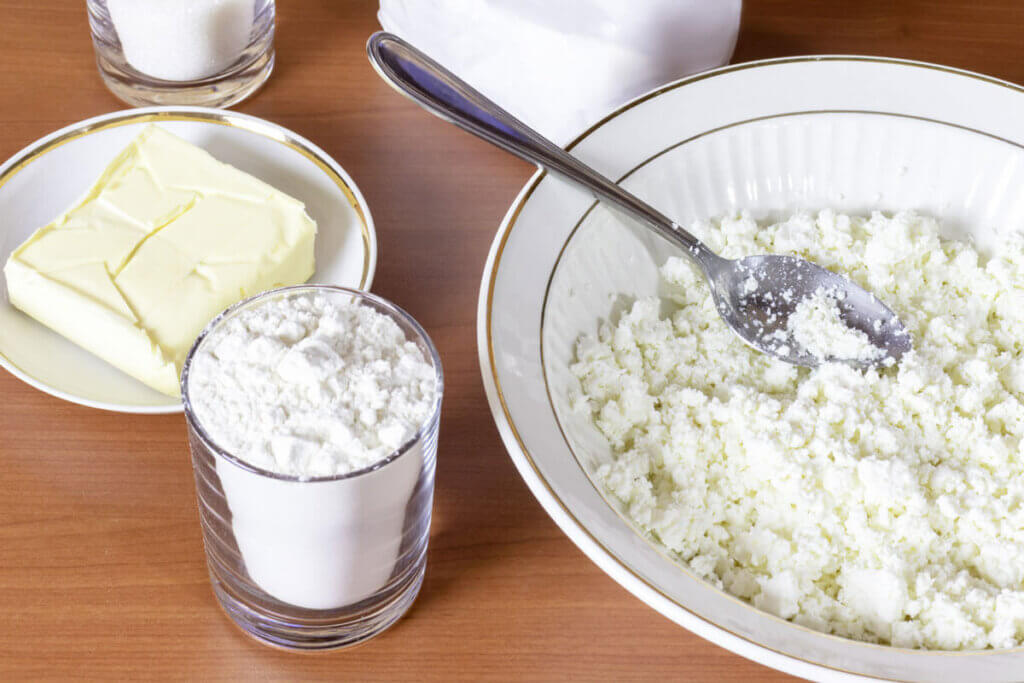
Join the Pioneering Today Academy!
As I mentioned in this podcast, enrollment for the Pioneering Today Academy is going to be open SOON! Join the waitlist if you want to be notified with an invitation once membership is open.
Resources
- Homemade yogurt
- Homemade buttermilk
- Dehydrated buttermilk culture
- Homemade Buttermilk Ranch Dressing (Probiotic)
- Self-Sufficiency Tips from the Great Depression Era
- Pioneering Today Academy enrollment waitlist
- Verse of the week: 3 John 1:5
More Articles You May Enjoy
- What is A2 Milk & What are the Benefits?
- Fermentation for Health Benefits
- Signs To Watch For With An Expecting Cow
- How to Store Lemons (For a Year!) – Fermented Lemons
- Kahm Yeast (What, Why & Does it Ruin a Ferment)
- Ultimate Guide to Fermenting Vegetables
- Fermented Pickles – Quick & Easy Old Fashioned Recipe
- Fresh Fermented Salsa Recipe
- How to Make a Sourdough Starter + Tips for Success
- 8 Tips for Strengthening Your Immune System Now
- Scottish Highland Cows: A Unique Cattle Breed
[fusebox_transcript]
